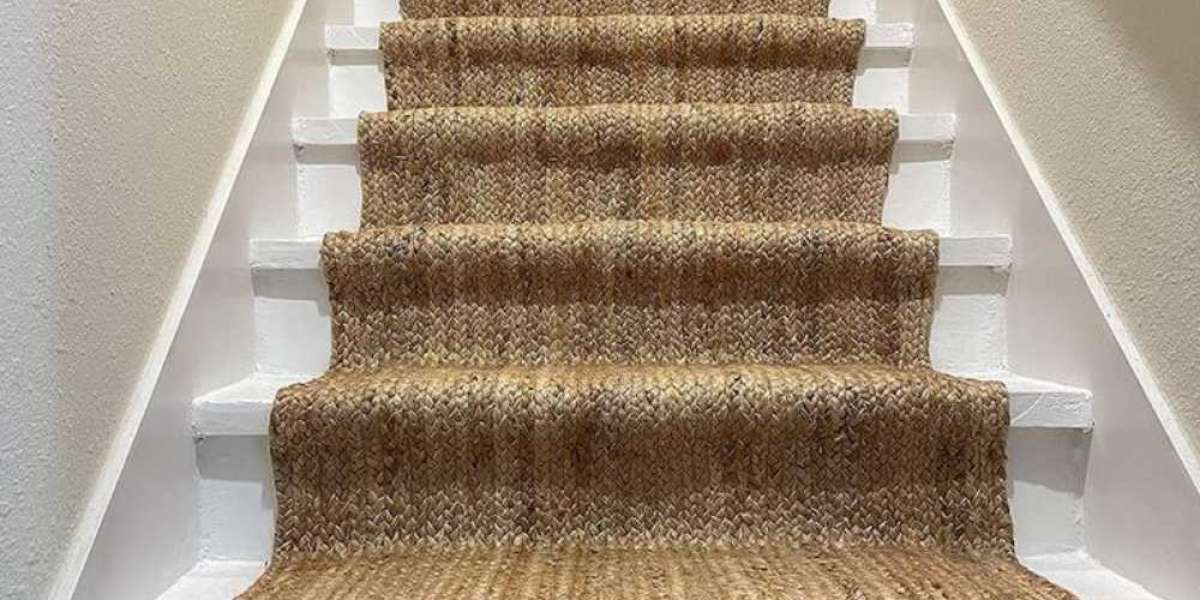Looking to upgrade your stairs with the perfect carpet? Learn how to choose the best stair carpet for your space, from style to comfort. Discover tips on choosing the right material, color, and texture to make your stairs stylish and safe.
There was a time when I thought buying a stair carpet was as easy as picking any piece of fabric and rolling it up. But little did I know, selecting the right stair carpet for your home is no simple task. The more I researched, the more I realized how much thought goes into choosing the perfect carpet to fit the space, style, and overall atmosphere of your home. I want to take you through my journey and the steps I followed to find the best stair carpet for my own staircase, so you can avoid the mistakes I made and find the perfect fit for your home.
Step 1: Understanding the Importance of Stair Carpets
Before I dove into the aesthetic choices, I had to understand why a stair carpet was even necessary. It seemed like just another decorative choice, but I soon learned that it was about much more than that. Staircases, though often overlooked, are one of the most high-traffic areas in any home. And stairs can be hazardous—slips, trips, and falls are far too common, especially in homes with young children or older adults.
A stair carpet can provide the perfect balance of style and safety. It adds comfort, reduces noise, and, importantly, increases traction to help prevent those unwanted accidents. So, the first lesson I learned was that stair carpets serve a functional purpose as much as they do an aesthetic one.
Step 2: Defining Your Style Preferences
Now that I understood the practical reasons behind having a stair carpet, it was time to think about my home’s style. The last thing I wanted was a carpet that felt out of place or didn’t complement the rest of the décor. I began by thinking about my existing design elements—was my space modern, traditional, or somewhere in between?
The stair carpet I chose had to match my home’s overall aesthetic. Whether you prefer a sleek, modern staircase or a more classic, warm design, there’s a stair carpet for every taste. Here’s how to narrow it down:
- Modern Style: If you’re going for a more contemporary vibe, opt for a neutral-colored stair carpet in a low-pile or flat weave texture. These carpets give off a sophisticated and streamlined look.
- Traditional Style: For a traditional home, choose a patterned stair carpet, like a floral design or a classic stripe. Rich, deep tones like burgundy or navy work well in traditional spaces.
- Eclectic Style: If your home has an eclectic style, don't be afraid to experiment with bold patterns or colors. A geometric print or a bright hue can make a statement.
I chose a warm, neutral-toned carpet that complimented my wooden staircase and the neutral tones of my home’s interior. This step was crucial because the wrong color or pattern could have thrown off the entire feel of my space.
Step 3: Considering Durability and Material Choices
Once I had my style preferences set, it was time to focus on durability. After all, a stair carpet is an investment, and I didn’t want to spend money on something that would wear out quickly, especially in a high-traffic area like stairs.
The material of your carpet matters greatly when it comes to durability. I did some research and found that the most common materials for stair carpets are wool, nylon, and polyester. Here’s what I learned:
- Wool: This is a premium option known for its durability and natural resilience. Wool is resistant to stains, wear, and tear, making it an excellent choice for stairs. However, it’s on the pricier side.
- Nylon: Nylon is another popular option, especially for high-traffic areas like stairs. It’s durable, stain-resistant, and comes in a wide range of colors and textures. It’s a more affordable option compared to wool.
- Polyester: Though not as durable as nylon or wool, polyester offers affordability and a soft feel. It’s best for less trafficked areas, but I decided against it for my stairs.
After weighing the pros and cons, I opted for a nylon stair carpet because of its balance between durability, cost-effectiveness, and stain resistance. It would withstand the daily wear and tear my stairs were bound to face.
Step 4: Deciding on Pile and Texture
Another factor that played a significant role in my decision was the pile and texture of the carpet. The pile refers to the height of the carpet fibers, which can range from low to high. The texture can greatly affect the look and feel of the stair carpet.
For stairs, a low to medium pile is typically recommended because high-pile carpets can be a tripping hazard. Plus, they’re harder to clean. As for texture, a flat weave texture felt like the right choice for me. It’s smooth and comfortable underfoot, yet offers a bit of interest without being overly bold.
I also considered the fact that the texture would impact how easy the carpet would be to clean. My kids often spill things, so I wanted something that wouldn’t absorb stains too easily. A flatweave carpet offered both ease of maintenance and a subtle but appealing look.
Step 5: Measuring for a Perfect Fit
At this point, I was almost ready to make a decision, but before I could do so, I had to make sure I measured my staircase correctly. There’s nothing more frustrating than buying the perfect stair carpet only to find out it doesn’t fit!
I made sure to carefully measure the width and length of each step, including the landings. I also accounted for the slope of the stairs, as this could affect how the carpet would lay. Some stairs are more challenging to carpet because they may have odd angles or shapes, so it was important to be precise.
To avoid any potential mistakes, I even called a professional to double-check my measurements. Getting this part right was key to ensuring I didn’t waste money on the wrong size.
Step 6: Installation Considerations
I decided to install the stair carpet myself, as I wanted to save on installation costs. However, I quickly realized that installing a stair carpet isn’t as simple as rolling it out and stapling it down. There are several techniques for proper installation, such as wall-to-wall installation or using stair rods to secure the carpet in place.
While I thought I could do it alone, I ended up calling in a professional after attempting the first few steps. I realized that professional installers know how to handle tricky corners and ensure that the carpet stays securely in place for years to come.
Step 7: Maintaining Your Stair Carpet
One of the final things I learned during my journey was how important it is to maintain your stair carpet. Since stairs are high-traffic areas, they tend to accumulate dirt and wear out quicker than carpets in other rooms. I made sure to vacuum my stairs regularly, especially the edges, where dirt tends to collect.
Additionally, I used carpet protectors to prevent stains and prolong the life of my carpet. Regular professional cleaning every 12-18 months also helped keep the carpet in top condition.
Conclusion: Finding the Perfect Stair Carpet for Your Space
Choosing the best stair carpet for your home isn’t just about picking something that looks good. It's about finding a combination of style, durability, comfort, and practicality. The carpet you choose for your stairs should enhance your home's aesthetic while also serving its functional purpose of providing safety and comfort.
After my journey of trial and error, I finally found the perfect stair carpet—one that aligned with my style preferences, was durable enough for my kids to run up and down, and added a touch of elegance to my staircase. I hope my story helps you find the right carpet for your stairs, so you can create a space that is both beautiful and functional.








